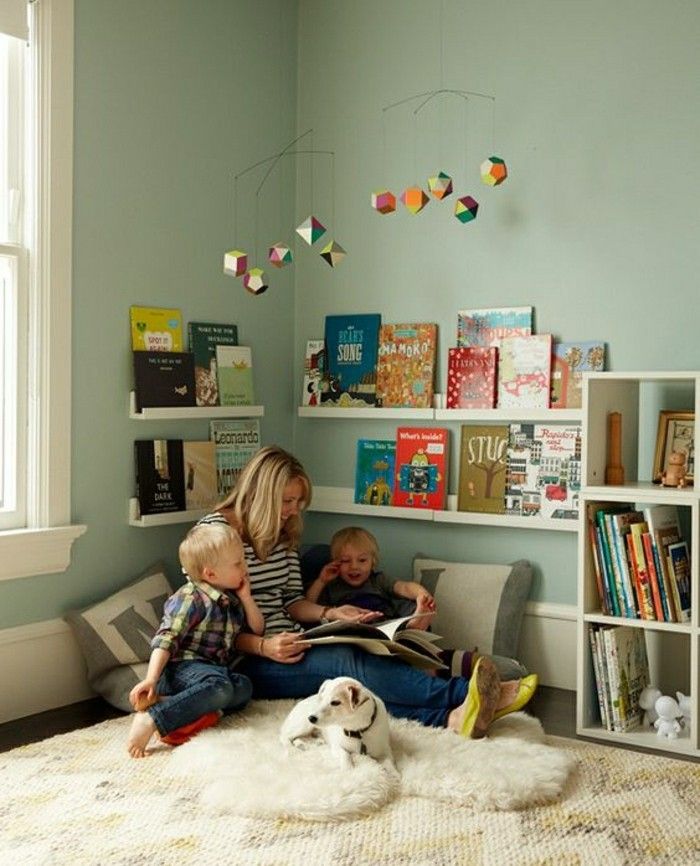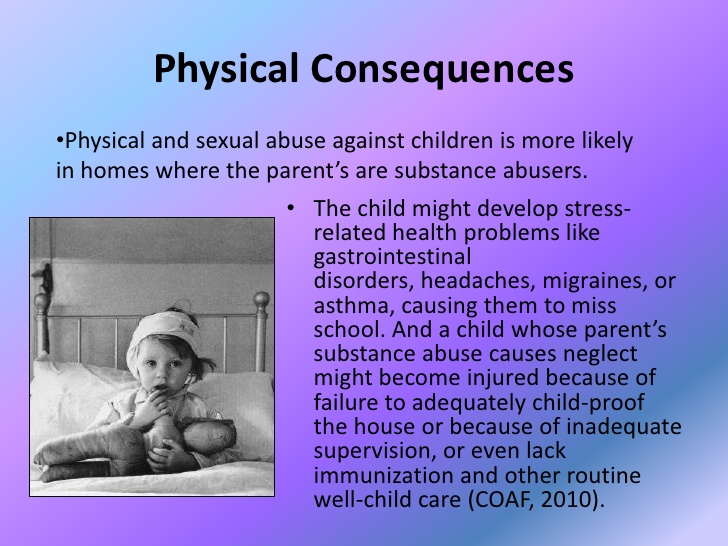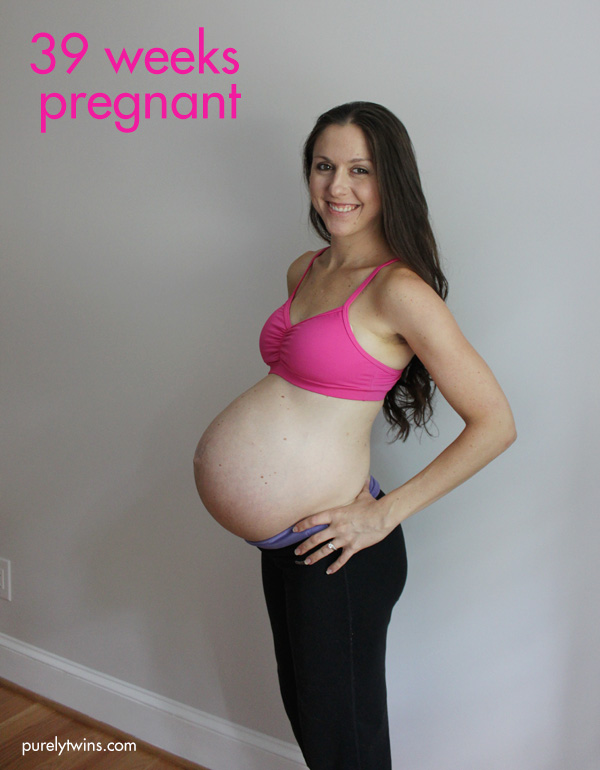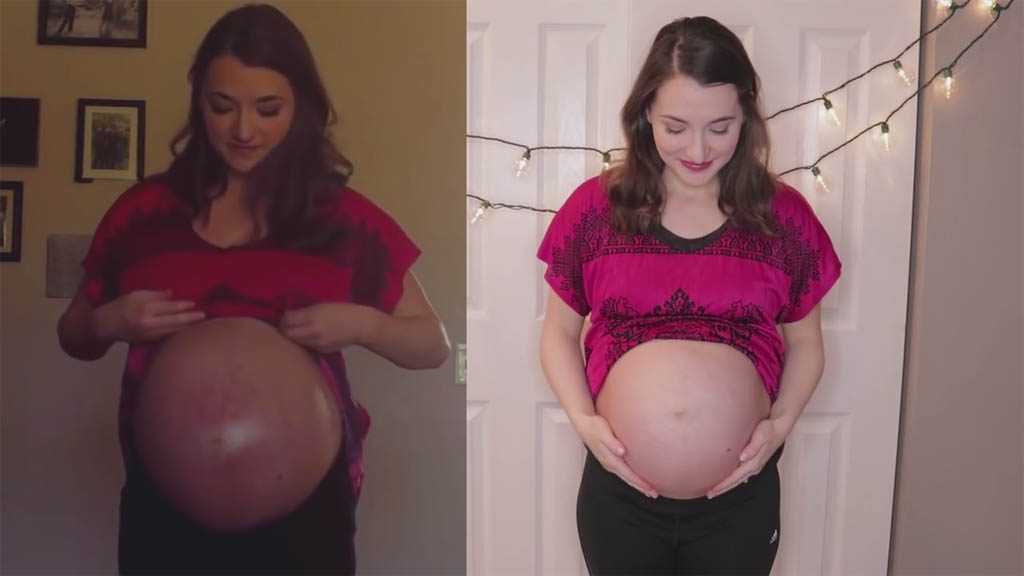How to organize child room
Kids Room Organization: Your Complete Guide
- Share
- Tweet
A kid’s bedroom can be just as organized as the rest of your home. After you follow this kids room organization guide, you’ll have everything you need to organize it and keep it that way.
From toys to clothes to school papers, a kids’ room easily becomes disorganized and messy. There is just so much stuff to keep track of and store. And when you are super busy, your kids room organization gets neglected. It’s easy to let that stuff pile up.
But having an organized kids’ bedroom will save you so much time. You won’t lose important papers, shoes, or socks as often.
Wondering where to begin? Get our FREE guide, The 30-Minute Organizing Secret, and discover easy ways to overcome the chaos of clutter – even with kids at home!
Kids’ Room OrganizationThis guide will walk you through every step of the kids’ room organization process. You’ll learn how to organize your kid’s bedroom, tricks for setting up specific areas in the room, and how to teach your kids to keep their room clean.
Everything in this post – and more – is in our Take Back Control book. It’s an easy download and gives you all this information right on your phone or tablet!
Table of ContentsWhat you’ll find in this guide:
- How to Organize Kids’ Bedroom – 15 Steps
- 4 Easy Ways to Keep the Kids’ Room Organized
- Set up Rewards
- Constantly Maintain Storage Solutions
- Before Holidays and Birthdays, Donate
- Keep Storage Ideas Kid-Friendly
- Storage Ideas for Kids’ Rooms
- How to Create a Homework Station
- How to Create a Reading Nook
- Tips for Organizing a Shared Bedroom
- Establish Space for Each Child
- Store Unused Items Elsewhere
- Teach Room Maintenance
- Kids’ Clothes Storage Ideas
- Toy Storage Ideas
- Stuffed Animal Storage
- LEGOs Storage
- Under Bed Storage
These 15 steps will walk you through every part of the process.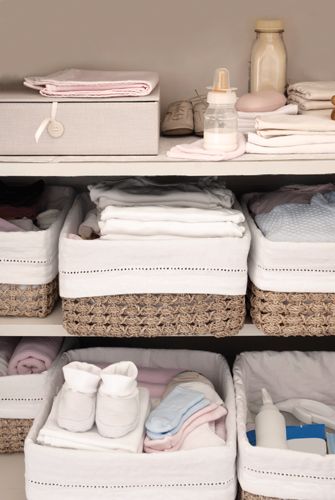 By following each step, you will have a super clean and tidy room for your child.
By following each step, you will have a super clean and tidy room for your child.
The first step is also the most obvious. Before you can begin organizing everything, remove all the trash.
Throw away any broken toys, unwearable clothes, and any school papers that they don’t want to keep.
After you remove the trash, you’ll be able to see how much stuff you need to store or donate.
2. Go Through All the ClothesAfter all the trash is removed, sort through their clothes. Clothes are the number one problem in children’s rooms. It’s so easy to accumulate more clothes than they need.
You can either do this in sections – sorting through the drawers first, then the closets. Or you can choose to do it all at once.
Create 3 piles:
- Keep – These are clothes your child still wears currently, in the current season.
- Donate – Clothes that are out of season and won’t fit your child next year.
 This could also include clothes your child doesn’t want to wear or doesn’t like. If you don’t have a lot of extra storage space, consider donating extra clothes.
This could also include clothes your child doesn’t want to wear or doesn’t like. If you don’t have a lot of extra storage space, consider donating extra clothes. - Store – Put away or store clothes that you are wanting to hand down to another child, or clothes that hold significant emotional value.
Fabric storage bags or totes with handles work great for storing kids’ clothes. Use storage bags that have a useful label pocket on the front so you can easily keep track of the sizes you put in each bag. You can also fold the bags to store them when they’re not in use and save space.
As you find clothes that are too worn out or stained to wear, throw them away. If it isn’t wearable, don’t donate it.
3. Sort Through The ToysThe next largest project will be sorting all the toys in your kids’ room.
If you encourage your child(ren) to sort through the toys with you, it is more likely that they will learn how to keep their room clean on their own.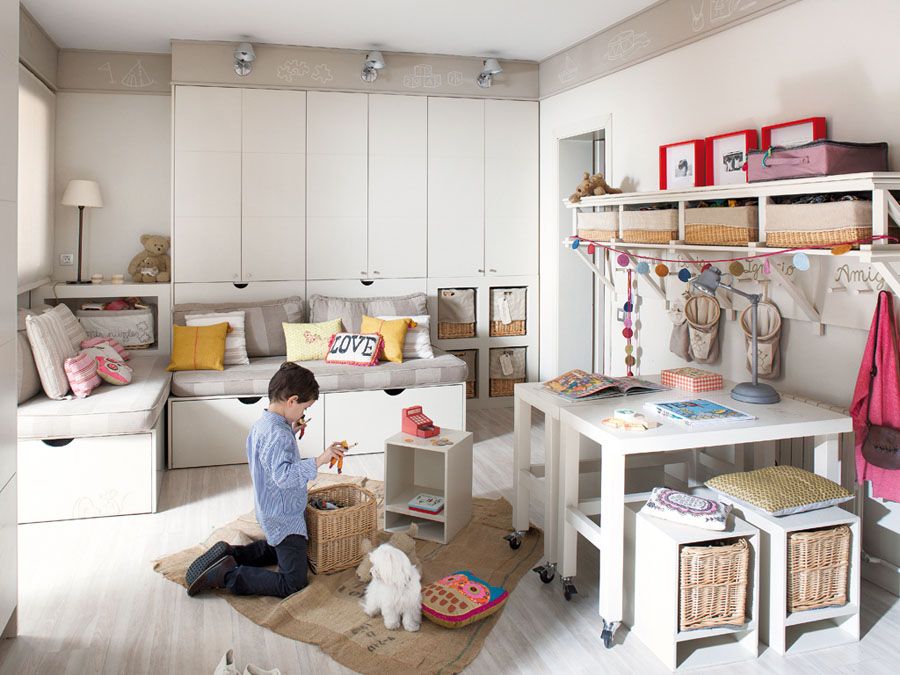 Use this as a teaching moment, helping them understand how to let go of things that are broken or that don’t interest them anymore.
Use this as a teaching moment, helping them understand how to let go of things that are broken or that don’t interest them anymore.
Only keep the toys that either have a deep emotional connection (like their favorite teddy bear) or things they enjoy using currently.
Read on – later in this guide you’ll find some toy storage tips and ideas.
4. Organize All the BooksAfter you know what toys you are keeping, turn your focus to your kids’ books.
If you have room to store all the books you own, take notice of how much room you have left for future books. If you are running out of space, don’t bring more books in until you give some away.
Store precious books in containers with lockable lids. You want to protect the book from any pests or accidents.
5. Pillage the PapersNext, gather up all the loose papers in the entire room and figure out what you are going to keep, if any at all.
Papers are one of those things that accumulate and seem to grow, like a living thing. It’s very likely that you will throw away almost every single one.
It’s very likely that you will throw away almost every single one.
When was the last time you cleaned out from under the bed? That’s the next step to organizing your kids’ room.
It might help to move the bed around so you can reach everything that fell underneath it.
Pull out everything and put or throw it away.
This step leads you right into the next one: deep cleaning everything.
7. Clean EverythingBefore you put everything away, wipe down and clean all the surfaces. Vacuum or mop under the bed. Dust the tops of the dressers.
Everything will look nicer – and it is more hygienic – in a spotless room.
8. Create New Storage SolutionsNow that you cleaned out every single item, you should have a pretty good idea of what you need to store.
Make a list and start creating storage solutions that are customized for your child’s bedroom.
Do you need more book storage? Maybe you need a place to store LEGOs or a plush collection. You’ll find ideas for both later in this kids room organization guide.
9. Create Memory BoxesAs you sort through all the books and papers, you will find little things that your child clings to as memories.
Create a memory box and tell your child that they can keep whatever fits in the box. This is perfect for art they create, photos, and little gifts they get from family and friends.
10. Clean Out Desks and DrawersNow that you have almost everything cleaned and sorted, it’s time to empty out the drawers in the room. Do the same donate/trash/keep sorting that you’ve done for everything else.
Before putting everything back in the drawers, wipe them out and create new storage systems inside like drawer organizers.
11. Keep Tops of Dressers and Desks Clear of Extra ThingsAs you go through and create your new storage systems, resist the urge to store things on top of dressers or desks.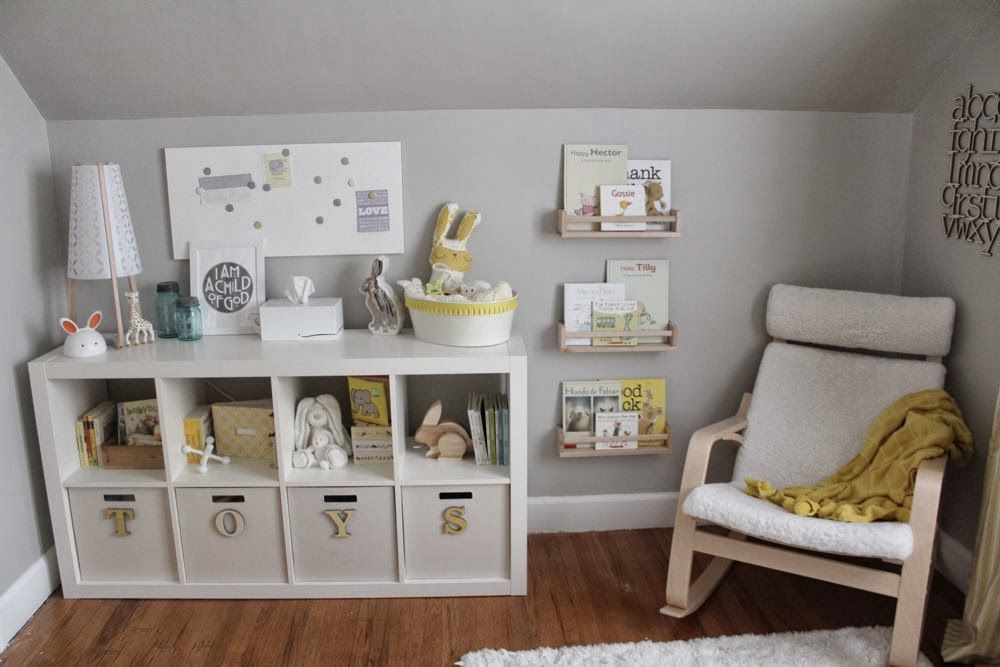
It seems like horizontal surfaces are magnets for disorganized piles of stuff. If you make it a point to always keep them cleaned off, you will be enforcing new organization habits.
12. Replace Broken FurnitureWhile you are in the mode of keeping only useful things in your kids’ room, turn your attention to the furniture too. Replace or fix broken furniture.
Also consider replacing used furniture with options that have additional storage capabilities.
Look for storage benches or ottomans with places for books, toys or shoes.
13. Make the BedAfter putting everything away in your new storage systems, make the bed. This one finishing touch can make the entire room look even cleaner and more polished.
When you are making the bed, take an inventory of everything your child keeps in the bed. How many stuffed animals or books are taking up space?
Try to find better places for all that stuff so the bed is easier to make in the future.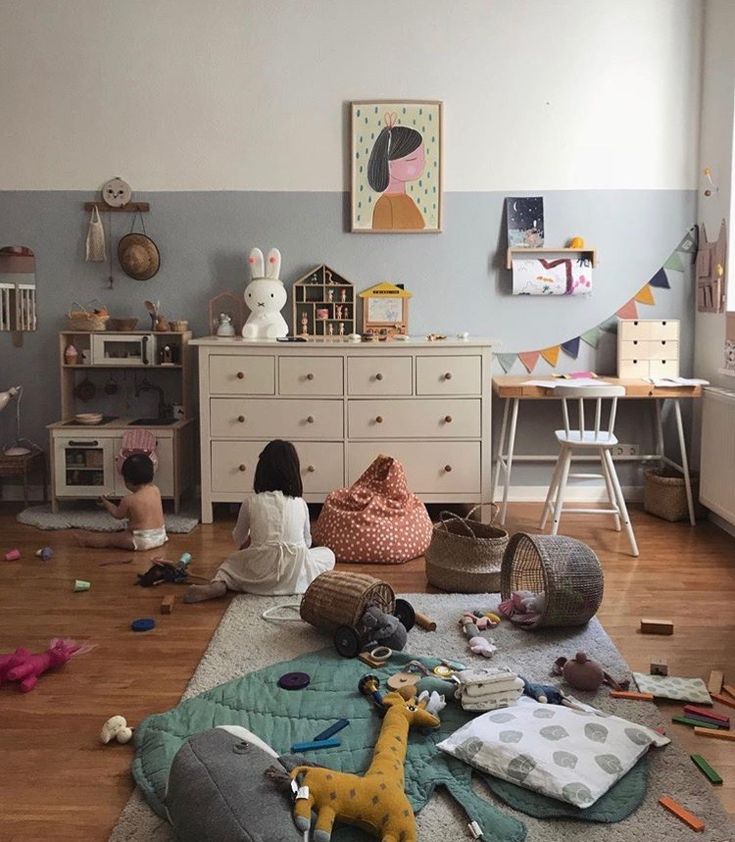
Rearranging the furniture is an optional step, but it can breathe new life into the room.
Changing the placement of the bed and dresser can also give your child more playing room.
If you choose to change it up, keep in mind traffic flow. Leave room for safe walkways.
15. Create Maintenance ChoresFinally, create chores that will maintain the newly cleaned and organized room.
These are the chores that your child can do that will keep the room clean:
- Make the bed everyday
- Keep toys put away
- Pick up and put away clothes
- Throw away all trash
- Give away toys they don’t like or play with anymore
Since going through and organizing a child’s bedroom is a huge project, after it is completed, you will want to keep it that way for as long as you can.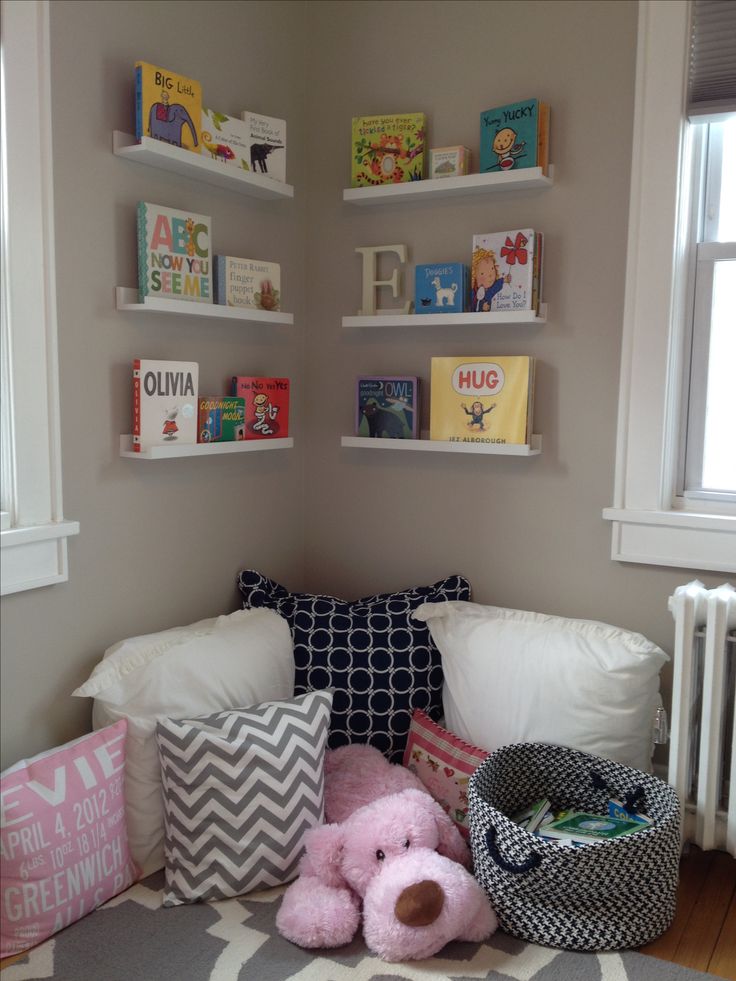
Here are 4 proven ways to help keep your kids’ room organized long-term.
Set Up RewardsFirst, set up a rewards system. Reward your child every time they do something that keeps the room clean.
There are lots of printable rewards charts you can find for free. This simple rewards chart is so basic, you can use it for almost any behavior that you want to encourage.
Maybe give a sticker for every time they put their toys away, and once they fill up the chart, they earn a reward.
This is completely personal, so do what works for your family. The most important thing to remember is that if you want your child to help keep their room clean, you have to encourage new habits and set expectations.
Constantly Maintain Storage SystemsSecond, maintain the storage systems in your child’s room. As they outgrow shelves or tubs, either donate some things or create a different system that works better.
Before Holidays and Birthdays, DonateThird, make it a habit to go through all your child’s things before every holiday or birthday.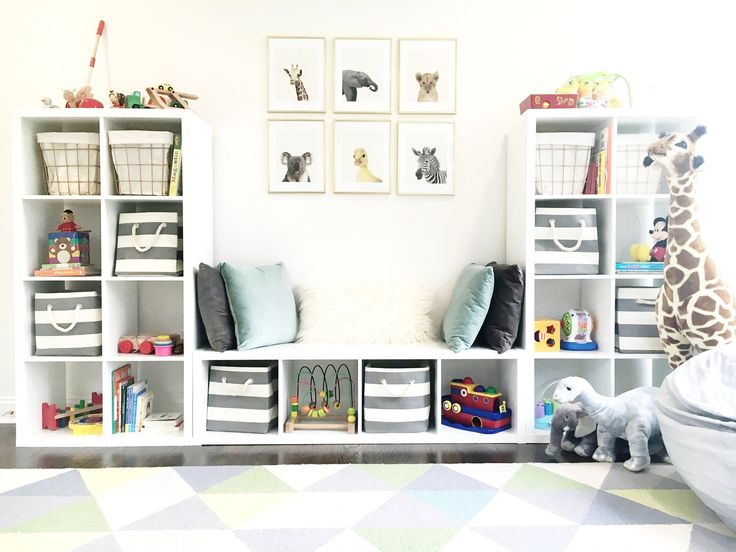
If you know they are going to be getting a lot of new things, create room to store them. Stay proactive.
Keep Storage Ideas Kid-FriendlyFinally, your child’s room will stay organized longer if the storage solutions are kid-friendly.
If your child can’t read yet, label the boxes with pictures. Keep bookshelves at their level so they can reach them.
Storage Ideas for Kids RoomsHere are some beautiful kids’ rooms that will give you some storage ideas and inspiration as you begin cleaning and sorting.
Organize A Kid’s Room on a BudgetFind ways to upcycle and rearrange the room that won’t cost you a ton of money. Here are some inspirational ideas for kids’ rooms.
Use a Bookcase as a ClosetIf you don’t have a lot of closet space, you can easily convert a bookcase into a closet. Hang up clothes from it and use some baskets for other storage solutions.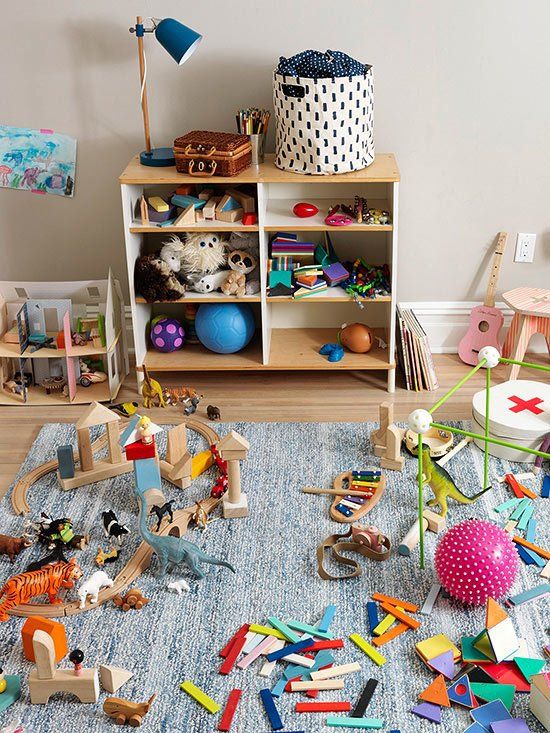
Wooden crates are the perfect size for stacking and using as book storage. Paint them the same colors as the child’s bedroom for a personal touch.
If you use this as a bookshelf, attach them securely to each other and to the wall. This will protect your children from accidents.
If you have older children, add some plastic crates above the window. This can hold toys, books, games, and anything else that is getting in the way in the closet.
It’s also a really cute way to display collections of plushes.
Create an art cornerPhoto Source: Katherine Sable DesignAnd if you have a free corner, you can set up a small table and chairs and add a few towel rods for a lovely art corner.
When your child’s room is clean and organized, it is easier for them to think and focus on their homework.
If there is enough space, consider creating a little desk area for your son or daughter. Give them a dedicated homework station where they can do their work quickly and get back to being a kid.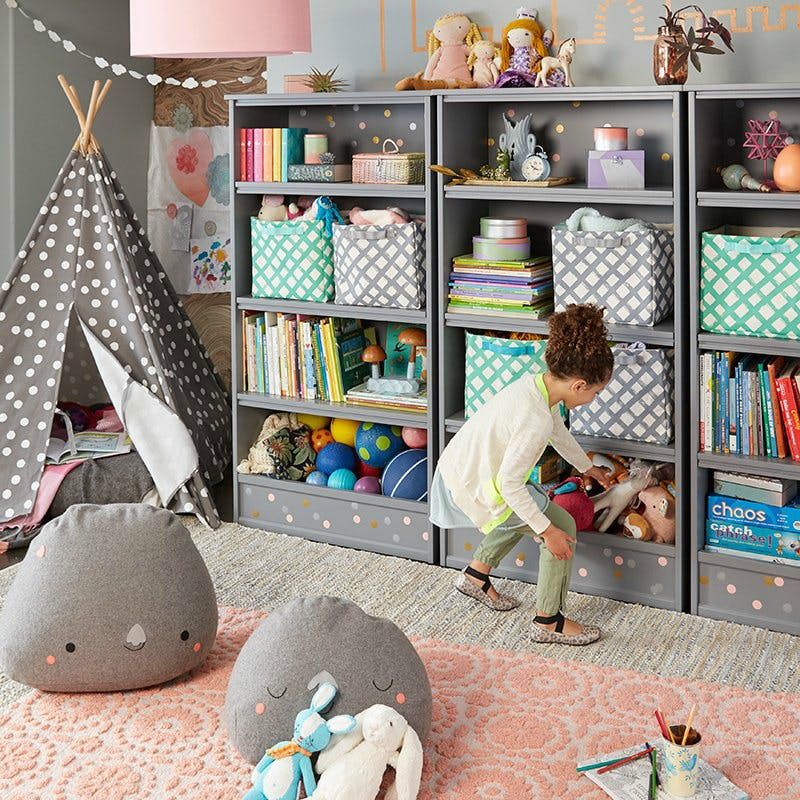
To create a homework station, all you need is a desk and an organization plan for the office supplies.
Even a small closet can become the best homework station ever.
What you need for a useful homework station:
- Desk
- Office Supplies
- Light
- Storage Solution for Papers
- Calendar for Homework Reminders
- Electrical Outlets
If your child doesn’t already have a reading nook, create one. Establishing a corner of the room for books and reading will encourage a love of reading, and help you keep all the books in one place.
Here is how to create a functional reading nook for your child.
Photo Source: Kojo DesignsYou don’t need a whole lot of furniture or room to create a reading nook. In the picture above, they used 2 pallets and a few body pillows.
This is what you need to create a reading nook:
- Place to read – beanbag, chair, pillows
- Book storage – floating shelves, bookshelf
- Warmth – blankets, a tent for privacy
Sharing a bedroom is really tricky.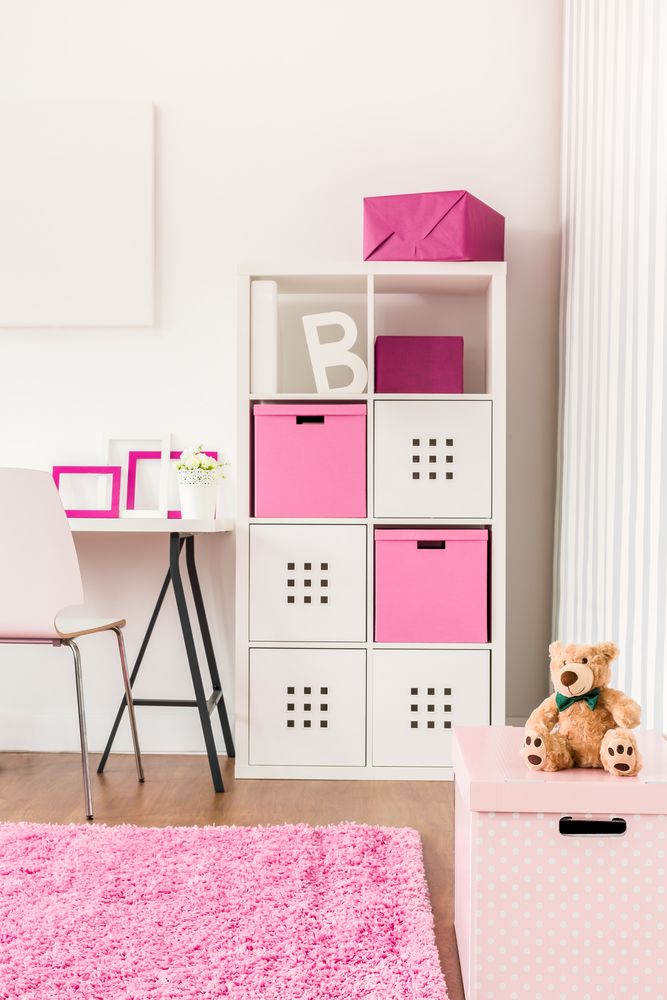 You have multiple children all trying to store their things in the same space.
You have multiple children all trying to store their things in the same space.
Even with more than one child in a room, it is possible to keep it all organized. Here are some tips for organizing a shared bedroom.
Establish Space for Each ChildThe first step is to create a specific area for each child to store his or her things. If there are 2 children, it’s easiest to give each child half of the room.
If there are more than 2 in a room, you might have to get creative. Use these tips for creating an area for each child.
- Use floating shelves – Give each child a floating shelf next to their bed. This can hold their electronics, books, and other personal things.
- Label bins in a bookshelf – Give them each their own tub or basket for storing personal things.
- Use hanging closet organizers – These can divide the closet for easy clothes storage while also holding more of their things.
Go through the room and remove anything they don’t currently use.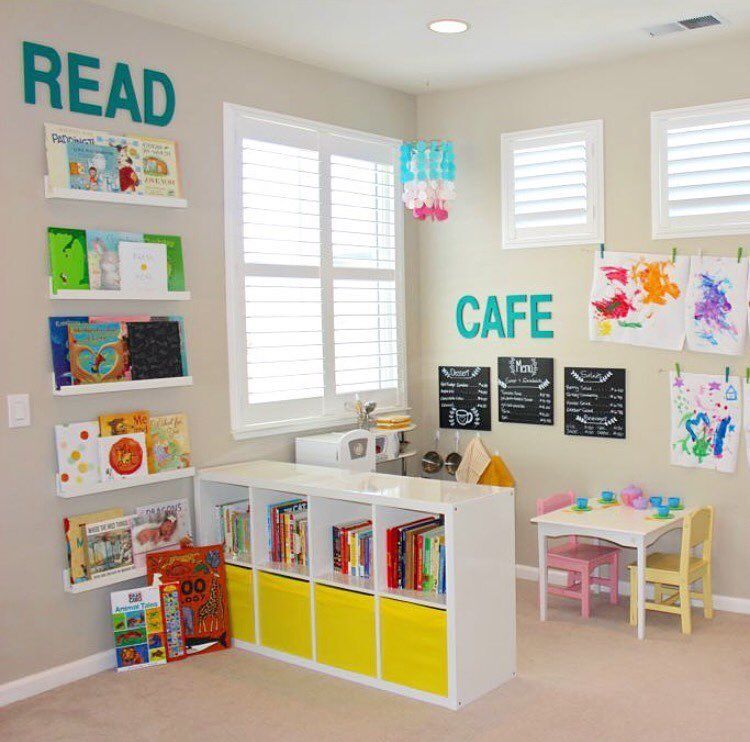 Store them in protective tubs in another room like the basement or hall closet.
Store them in protective tubs in another room like the basement or hall closet.
Removing anything extra will give everyone usable space for their things and cut down on stress.
Teach Room MaintenanceFinally, the last tip for organizing a shared bedroom is to actively keep it picked up.
Leaving piles of items on the floor creates stress and makes organizing a bigger job than it needs to be.
After you create zones and storage solutions, teach daily habits such as picking up the floor before going to bed.
Kids’ Clothes Storage IdeasOne of the largest problems with kids’ rooms are clothes. They just seem to accumulate so many clothes and it can be tough to keep them all contained.
If you think your child might own too many clothes, trim the collection down to a manageable level.
After you know that the clothes your child has are the ones they will wear, use these clothes storage ideas to help them keep them put away:
Put Closet Rods In Their ReachIf your child is too short to reach the closet rods, lower them.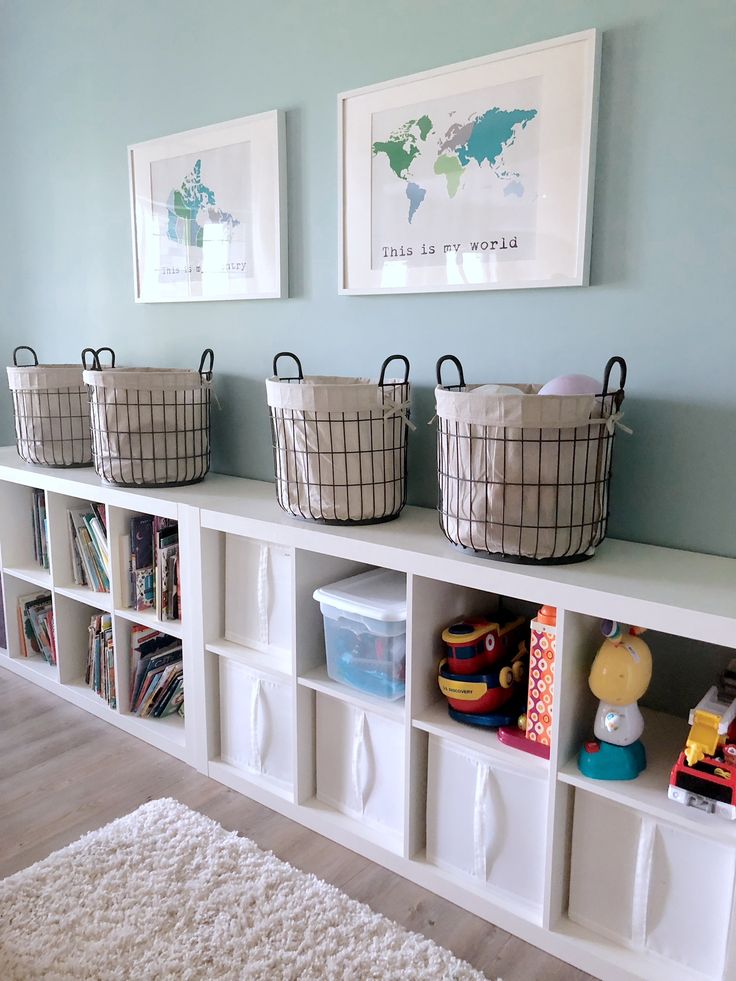 Make the closet usable for your small children so they can take ownership of their clothes and keep them picked up.
Make the closet usable for your small children so they can take ownership of their clothes and keep them picked up.
Use chalkboard paint on the dresser and label each drawer. This will help your children remember where to keep their clothes.
Use Hanging Organizers for Clothes AccessoriesIf your child has a lot of scarves or fun socks, use a hanging organizer in the closet for these extra things.
Hanging closet organizers are such a lifesaver. You can store almost anything in them. They are great for kids because they are so easy to use.
As you organize their closet, use this super-easy Tackle Your Closet toolkit. It includes printable labels and closet divider hanging tags (amazing for shared closets).
Divide DrawersCreate DIY drawer dividers with foam board to organize messy drawers.
These dividers can keep shorts separated from jeans or socks and underwear in their own zones.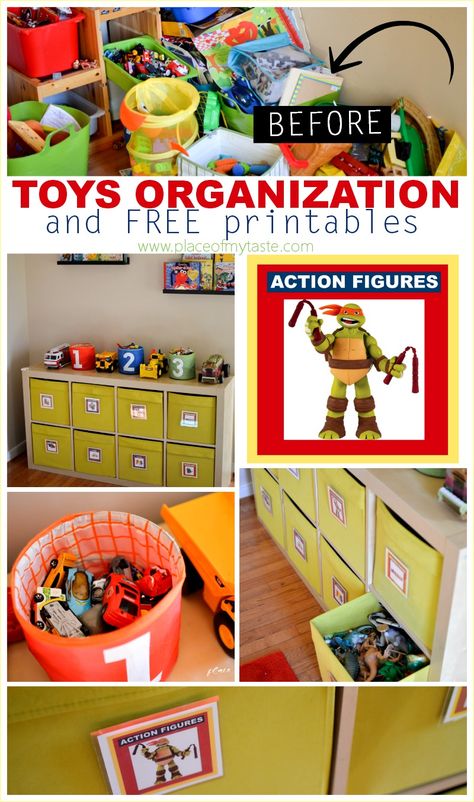
Keeping clothes organized is as simple as finding a storage solution that works for your child and only keeping as much as the room can hold.
Toy Storage IdeasThe second biggest problem in kids’ rooms is where to store all the toys. Whether it’s loose LEGOS or a pile of plushes, these tips will help you control all their toys.
Stuffed Animal StorageIf your child has a plethora of plushes, here are some ideas about how to corral them.
Curtain Rod Stuffed Animal StorageThe space between a curtain rod and the wall is perfect for stuffed animals. Depending on how many stuffed animals you have, you might have to install a few curtain rods on the wall.
Build A Plush ZooA plush zoo is simple to create with just some 2x4s and bungee chords. In fact, DIY Created has a tutorial you can follow.
Use NetsA classic storage solution for stuffed animals is to purchase some nets and hang them on the wall.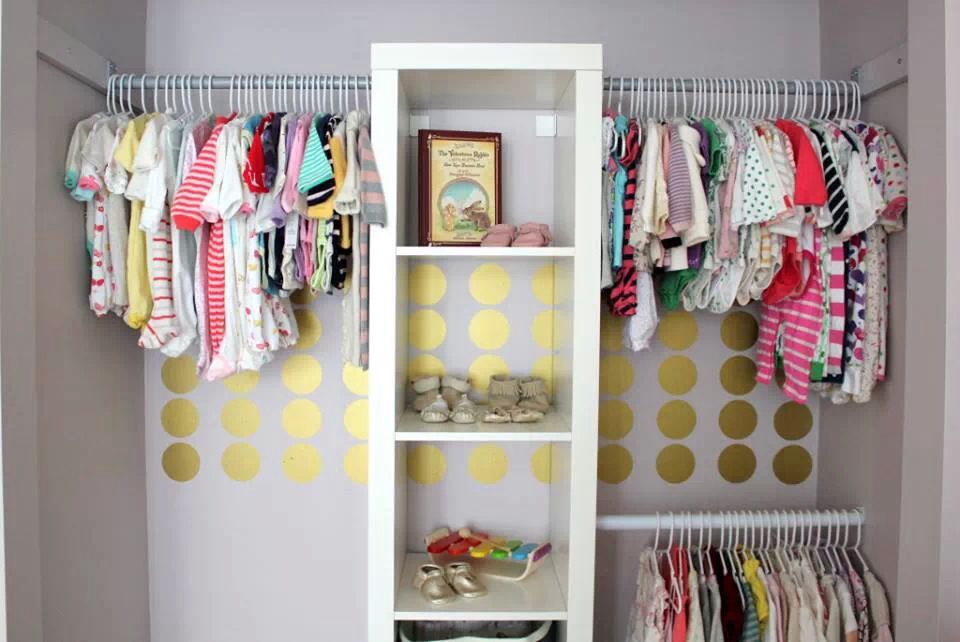
Finally, you can take a bean bag cover and fill it with plushes. This idea is popular because it puts all the plushes out of site while also creating more sitting space.
LEGOs StorageWhen you are storing your child’s LEGOs, the most important thing to consider is how to keep them off the floor.
The easiest option is to purchase shoebox-sized plastic tubs with lids and separate the blocks by color.
Another idea is to create a LEGO table. That Mommy Blog has an IKEA hack that creates both a play area and storage solution.
Under Bed StorageThe under bed storage are some of the best places to store things in your child’s room.
Either raise the bed up with risers and use tubs or find a bed frame with drawers.
Here are some things you can store under the bed:
- Memory Boxes – things like pictures and small gifts
- Shoes
- Extra blankets
- Accessories or Toys
There you have it! This was your complete guide to kids’ room organization.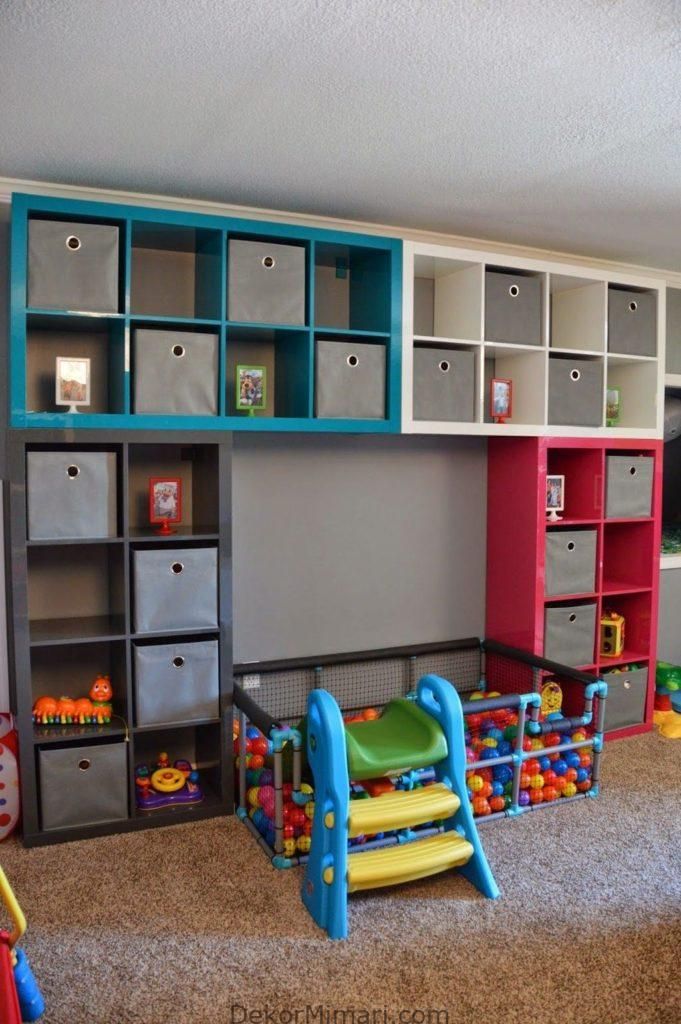 If your little one is still an infant, you will want to check our Our Complete Guide to Nursery Organization for even more tips. Don’t forget to pin this post so you can come back and reference it. Take this guide in small doses and soon you’ll have a completely organized room for all of your children.
If your little one is still an infant, you will want to check our Our Complete Guide to Nursery Organization for even more tips. Don’t forget to pin this post so you can come back and reference it. Take this guide in small doses and soon you’ll have a completely organized room for all of your children.
Struggling to get motivated? Sign up to get our FREE guide, The 30-Minute Organizing Secret, and discover easy ways to overcome the chaos of clutter – even with kids at home!
How do you keep small pieces together?
There are lots of tubs and bins with lids and bags that you can zip up and seal. The secret to keeping parts together is to store them in containers together. Invest in small containers with lids.
How do you rotate toys so they keep feeling like new?
Only keep out a few toys at a time. Store the extras in a closet or in the basement.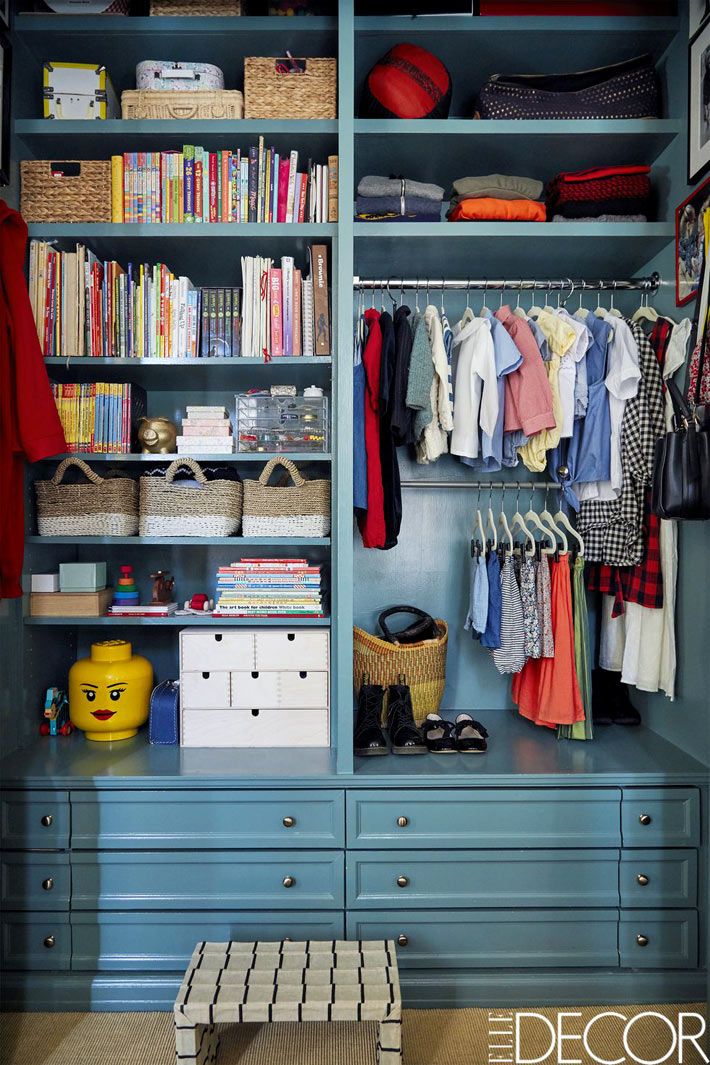 Every few months, switch the current toys with a few of the toys from the closet. Young children will feel like they have brand new toys!
Every few months, switch the current toys with a few of the toys from the closet. Young children will feel like they have brand new toys!
How many toys are too many in the kids room?
This depends on how much storage their room has. If it is a small room with very little storage space, you need to keep fewer toys in it.
More Home Organization ArticlesNow that you organized your child’s room, here are more organization articles for your family.
- How to Get Kids to Do Their Chores – Learn some helpful tips that will inspire your kids to help out more around the house.
- How to Keep Your Kids Organized – It’s easy enough to sort through things you own, but how do you keep your kids organized? This post has some valuable thoughts.
- Family Command Center Ideas – A command center will track everyone’s schedules and keep everyone organized.
- Share
- Tweet
How to Declutter Kids Rooms
If there's one room you wish you could lock up and never look at again, it's probably your kid's room.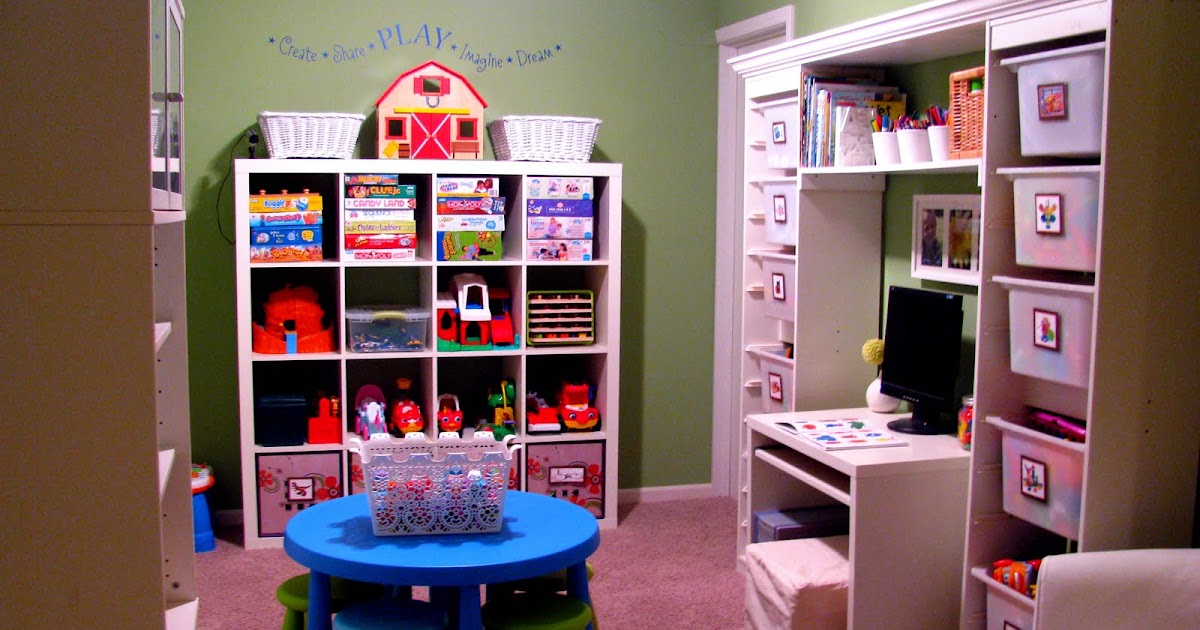 (Or maybe your basement, or your laundry room...OK, there are a lot of rooms.) But thanks to toys, books, clothes, and crafts, children's rooms can feel especially disastrous — especially since a certain little guy or gal never seems to be keen on keeping it tidy.
(Or maybe your basement, or your laundry room...OK, there are a lot of rooms.) But thanks to toys, books, clothes, and crafts, children's rooms can feel especially disastrous — especially since a certain little guy or gal never seems to be keen on keeping it tidy.
Is all hope lost? Absolutely not.
Professional organizing coach Maeve Richmond allowed us to be a fly on the wall as she helped entrepreneur and mom Dawn Nadeau organize her 7-year-old daughter Abigail's room (and the rest of her home, actually). As you'll see below, Richmond is quite the force, helping Nadeau take the room from cluttered to clean in just a few hours. Obviously, we had to grill her on her tips afterward — and we bet you've never tried these strategies before:
1. Involve your kids from the beginning."It's very important to work with them, and not around them," says Richmond, who chatted with Nadeau's daughter before they cleared and re-organized her room.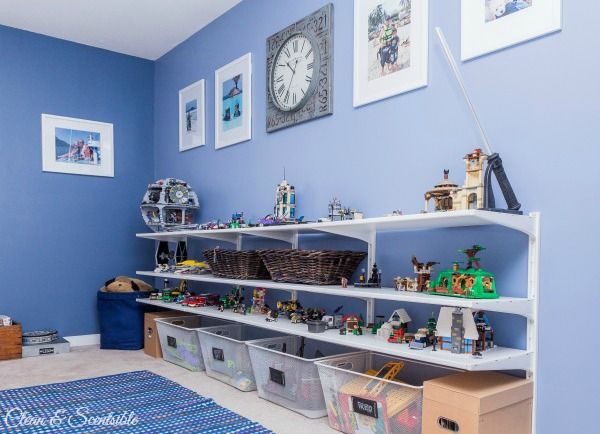 "Kids as young as 3 years old really want to participate, and they're really excited to be involved." You might think your kid would get too bored or frustrated talking about bedroom storage — but consider it from their point of view: You're just gabbing about their toys and paying them lots of attention!
"Kids as young as 3 years old really want to participate, and they're really excited to be involved." You might think your kid would get too bored or frustrated talking about bedroom storage — but consider it from their point of view: You're just gabbing about their toys and paying them lots of attention!
Plus, if kids are involved in organizing, they'll feel ownership over the project and more inclined to keep things tidy — or at the very least, they'll know where everything should go.
2. Have kids give you a tour of the room before you start decluttering."I start not by asking kids to choose what should stay or go, but by giving them a chance to look around and show me what's there," says Richmond. "Then I get a sense of their language and tone, which can illuminate things that are important to them."
"I mirror back people's language to them while organizing with them — for instance, let's say a kid calls a piece of clothing his 'favorite sweater.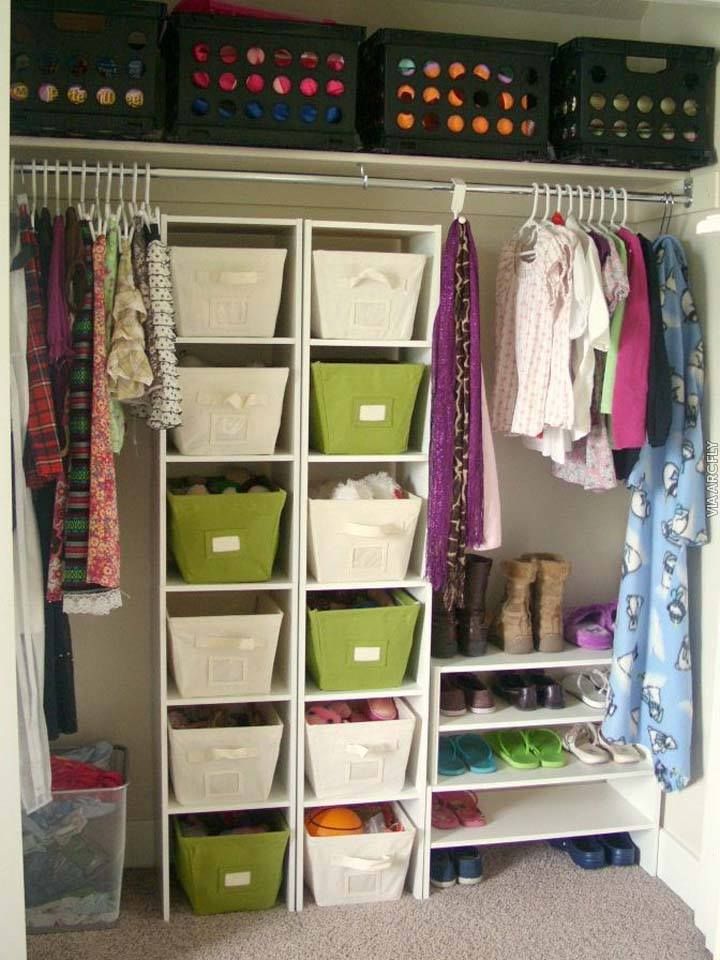 ' I'll call it that, too, because it says I recognize that it's meaningful to them, and proves that I'm on their side."
' I'll call it that, too, because it says I recognize that it's meaningful to them, and proves that I'm on their side."
Building that trust is important when asking kids to part with items (and now you'll be able to tell more clearly what things they clearly don't care about.)
Elizabeth Griffin
3. Talk about how stuff has "a home.""Kids have a natural ability to personify things," says Richmond. "So I say things like 'Do you want this item to live with you?' or 'Where should we give this a home?' when organizing with them."
"One thing we all heard growing up was 'put that away,' which feels so negative. Instead, try 'Can we put that where it lives?' " Richmond says this clever language tweak reframes the task in a positive light.
Elizabeth Griffin
4. Give your kid permission to let go of stuff they really don't want.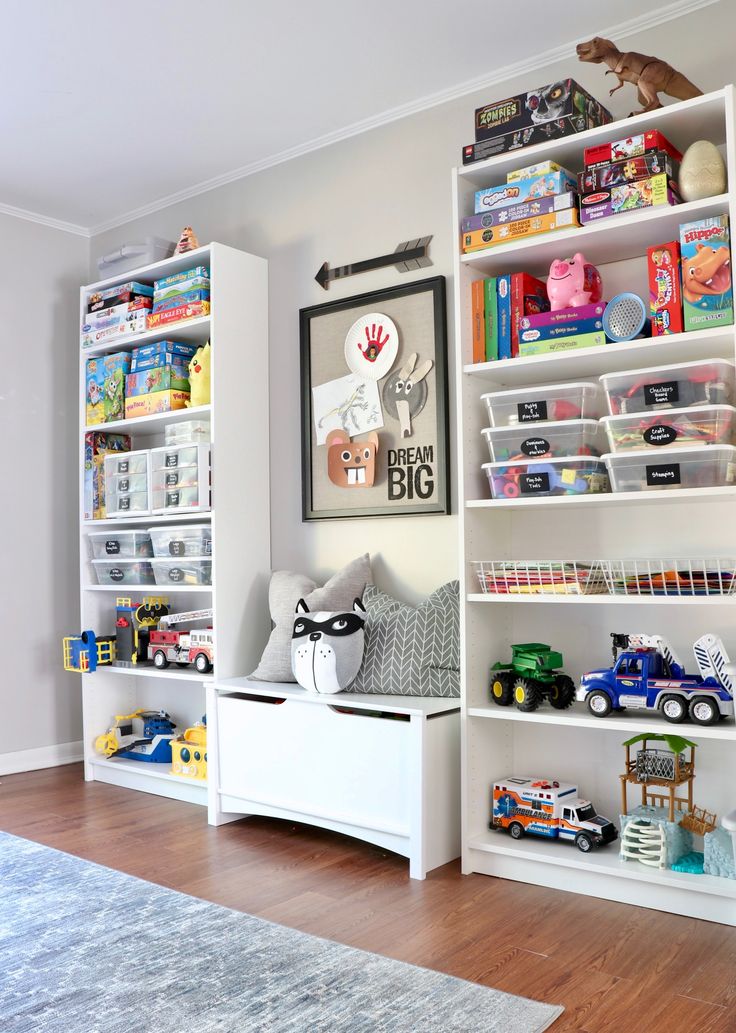
"Volume can be very overwhelming for children," says Richmond. "But most kids don't know that it's OK to say no to stuff they don't want. I like to try to set up situations in which we're donating items to charity — it continues the idea of using positive language when it comes to decluttering. We're giving the item a new home, not just getting rid of it."
5. Start from the bottom up – literally."With little ones especially, it's just nice to start on the ground — that's where they are!" says Richmond. Her "bottom up" strategy takes the process down to kids' level and keeps them grounded in the task. Plus, if they can see where their items' new homes are, they'll make a habit of placing them there.
Elizabeth Griffin
6. Reinforce their routine with cubbies."I love cubbies as an organizing tool for kids because it recreates what they're experiencing at school," says Richmond.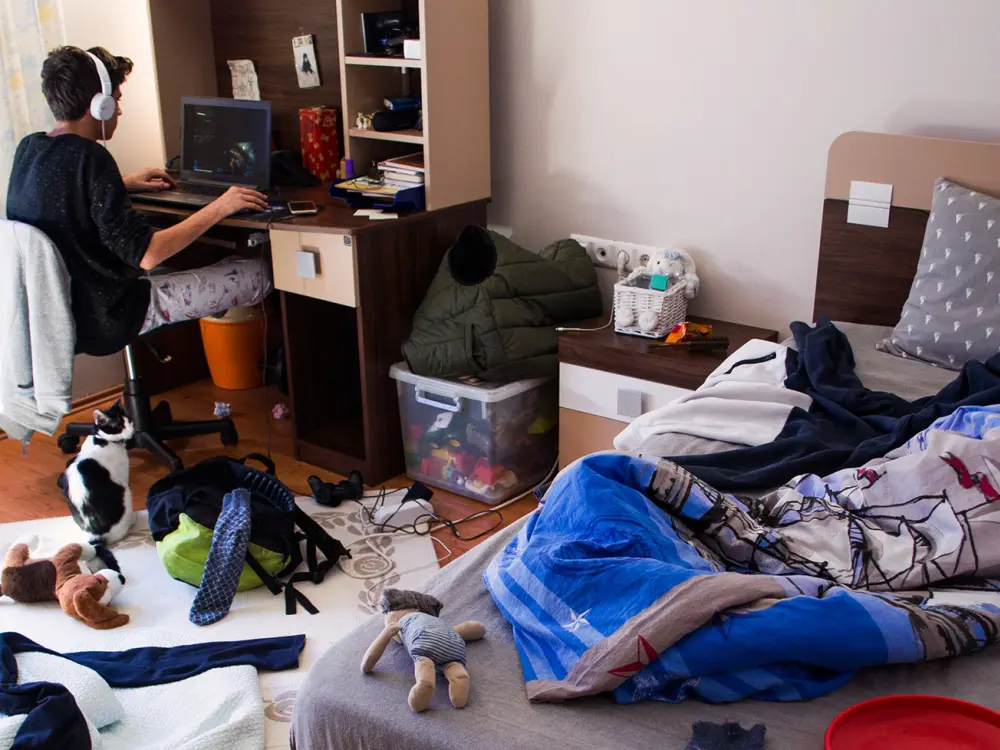 "And you can place them in the entryway or their room, creating a 'drop zone' area they'll naturally maintain. With a cubby they can drop their stuff, and not even have to think about it."
"And you can place them in the entryway or their room, creating a 'drop zone' area they'll naturally maintain. With a cubby they can drop their stuff, and not even have to think about it."
Here's an easy fact to remember: Games are fun! So when things get messy (as they always do), make cleaning up feel like play. "Have kids count backward and pick up ten items to put back in their homes at the end of the day," says Richmond. "It makes the task less onerous, and encourages you talk out loud about where items go, which can reinforce the habit for both of you and your kids — I use this strategy on adults, too, and it totally works. I even do it, too!"
8. Define boundaries with decor."Whenever I am working in a child's room, I always like to bring tables away from walls," says Richmond.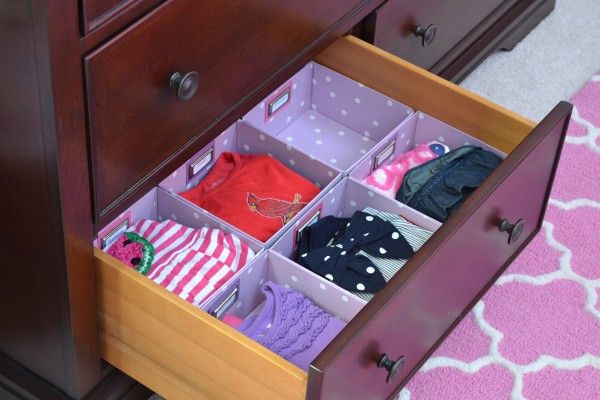 "Parents don't tend to do this, as it seems like wasted space. But pulling the table away from the wall allows kids to move more freely and fully around it, and welcome friends."
"Parents don't tend to do this, as it seems like wasted space. But pulling the table away from the wall allows kids to move more freely and fully around it, and welcome friends."
"I also like to add a rug under the table, though," she continues. "It visually anchors the room — and their stuff — but creates a mini room within the room. Kids' rooms tend to just be one big space, which is why they tend to get super busy." By creating this distinct boundary, it's easier to identify and honor the activities (like, say, glitter crafts) that should only take place in certain spots.
Elizabeth Griffin
9. Lead by example.You were probably waiting for this one right? "Leading by example is huge," says Richmond. "Kids mirror what their parents are doing. Sometimes you need to look at yourself and really see if your kids are modeling your behavior." Even something as small as putting away your keys can be a mini-lesson in action.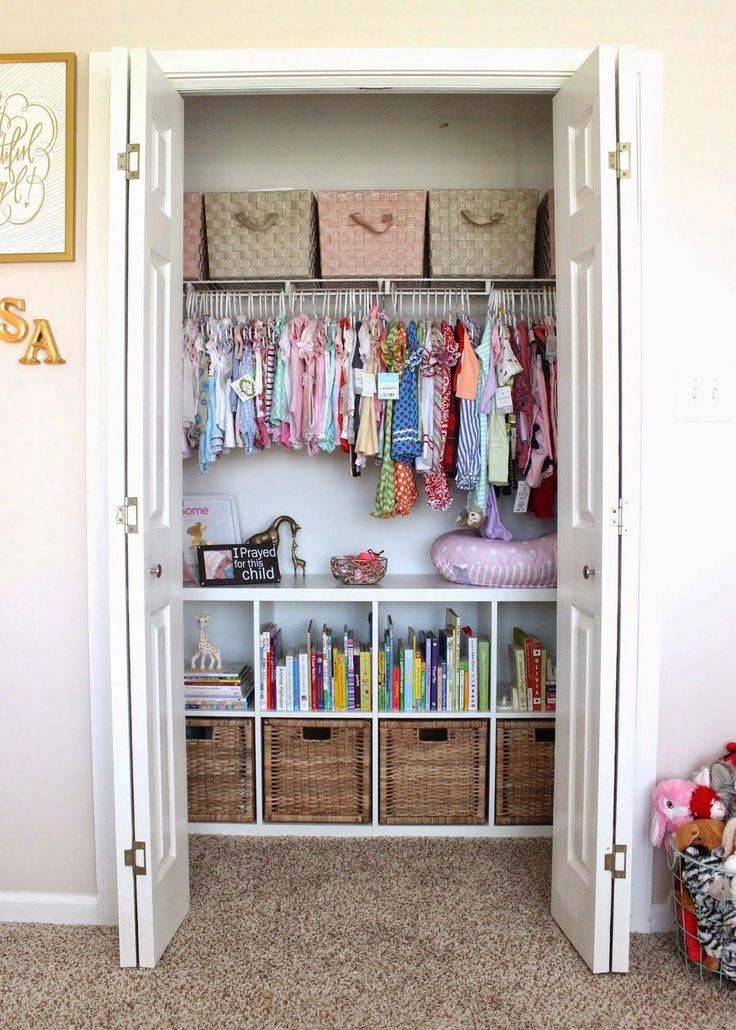
Not as tidy as you'd prefer to be? Good thing Richmond gave us her secrets for how adults can change their lives and finally get organized, too.
Elizabeth Griffin
Related Story
- How I Finally Got Organized
Lauren Piro
Senior Web Editor
Overseeing all things home for GoodHousekeeping.com and HouseBeautiful.com, Lauren swoons over midcentury design and employs tough-love approach to decluttering (just throw it away, ladies). She loves anything neon coral, puts bacon on her veggie burgers, and would follow Tina Fey and Amy Poehler to the end of the earth.
Children's room interior: how to organize children's space
Children's room is the most functional room, because it simultaneously functions as a bedroom, playroom, gym, workplace.
Children's room is a very important room in the house where there are kids, because even the smallest members of your family should have their own space. There, children have fun, learn about the world, do personal things and, of course, relax.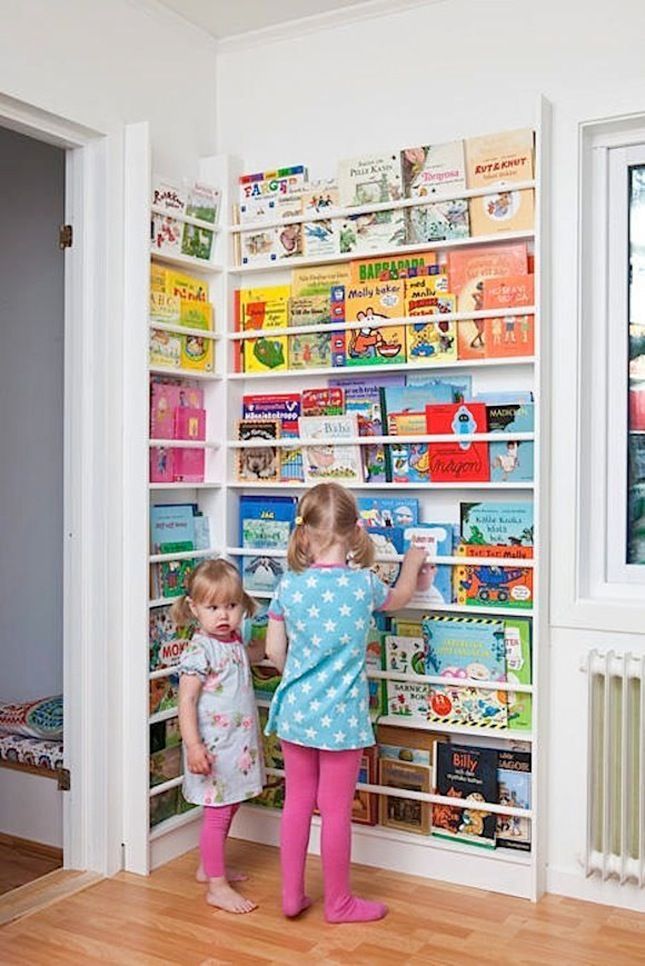
The nursery is the most functional room, because it simultaneously functions as a bedroom, playroom, gym, workplace. In order for the child to be as comfortable as possible, it is important to properly organize the space, and it does not matter what size the room is. In this article, designers from the architectural design bureau ALTERCASA will talk about how to organize the space in the nursery.
1 1
Color scheme
To visually make the room bigger, it is recommended to use light colors when decorating the walls: beige, peach, salad, cream. Adherents of the old traditions can paint the walls in soft blue for a boy and pale pink for a girl. And happy parents of two children can delimit the space with contrasting shades or various materials.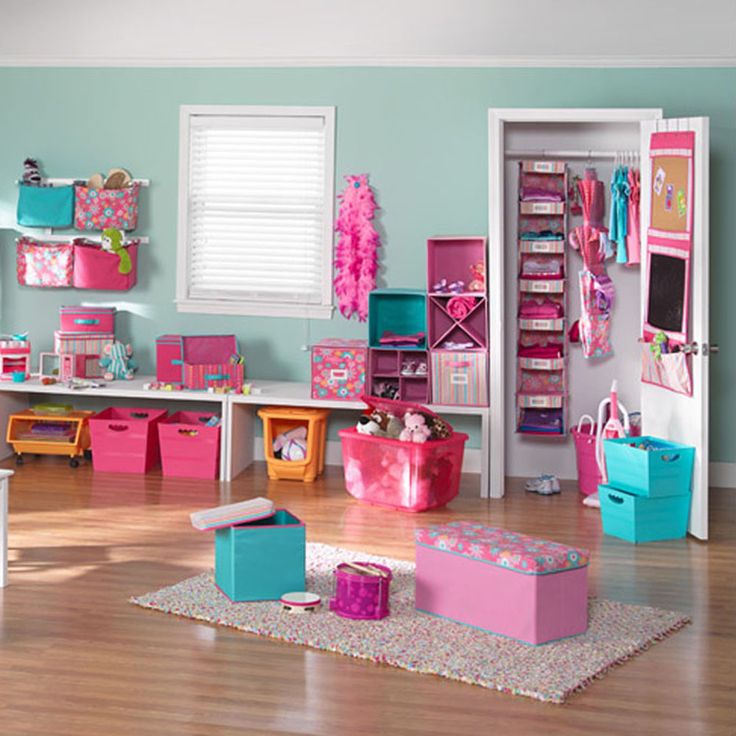
It is better to choose the color of the floor close to the color of the walls, so that it fits into the overall picture. However, we must remember - in the children's room, the floors should be non-slip, warm and made of natural materials. nine0004
Lighting
Lighting plays a big role in a nursery. It can be a spot light, a chandelier, all kinds of sconces and table lamps. At the same time, in choosing the main light source - ceiling - you should give preference to a laconic design without glass decorations, pendants and other decor items. It's great if the nursery is equipped with a dimmer - a power regulator. If a child in bed likes to read or fall asleep to fairy tales, then you will certainly need a sconce. By the way, well-placed mirrors, reflecting light, will help enhance lighting. nine0004
Furniture
When choosing furniture , you can choose one of the proposed options.
Modular furniture is a great option for those who do not want to spend a lot of money on the interior of the nursery. Its main advantage is the ability to select the necessary elements, independently determining how many shelves and drawers to allocate for things and toys. Another plus of such furniture is that if one of the components of the headset becomes unusable, only this part will need to be changed, significantly saving the family budget. nine0004
Its main advantage is the ability to select the necessary elements, independently determining how many shelves and drawers to allocate for things and toys. Another plus of such furniture is that if one of the components of the headset becomes unusable, only this part will need to be changed, significantly saving the family budget. nine0004
1
Transforming furniture, , as a rule, serves its owners for a very long time: a children's bed becomes a full-fledged sleeping place for a teenager or turns into a closet, freeing up space for games during the day, a small table moves apart and becomes a work table for work homework. It is very convenient and also saves space and money.
1
If two children live in the nursery , then you can't do without dividing the space with all kinds of chests of drawers, shelves and low partitions. This will provide each child with personal space and save the nervous system of parents who will not have to participate in children's struggle to win back the territory. 1 The traditional bunk bed will also help you save space, the beds in which can be located not only one above the other, but also perpendicular. In addition, manufacturers make such furniture as functional as possible: drawers-steps, a desk under the upper "floor", under the lower tier - a pull-out shelf for bed linen and other things. Such beds can combine a bedroom with a gym, as there are models equipped with a Swedish wall. nine0004 1 As for the recreation area, in a children's room one cannot do without a desk and a chair for drawing and modeling. After all, learning, self-development and knowledge of the world is one of the components of a harmoniously developing personality. Together with your child, design his room, give him the opportunity to express himself and you will be the best parents on earth. 1 tips , of course, it should be started. The nursery is the room where a lot of important things are done (sleep, activities, play, creativity, sports) and therefore a lot of things are stored there. It would seem that all of this is necessary and there is nothing to throw away. However, if you dig deeper, you will find broken toys, dry felt-tip pens, games without details, a thousand and one kinder surprises, as well as other unidentified objects. nine0004 Project by Anna Hakobyan. Seeing the whole range of children's stores, it is very difficult for parents to resist buying. Designed by Lara Hedberg Diam. We need to solve this issue radically: throw away everything that is broken, give away clothes that are unsuitable for age, and sell expensive toys that the child no longer needs. Keep crafts, drawings and other memorabilia exactly in the amount that the space can accommodate. If there is not enough space, agree that a beautiful drawing hangs on the wall for a week or a month, and then it is replaced by new masterpieces. nine0004 Project by Natalia Vysotskaya. What is the correct zoning of the nursery? This is when at first glance it is clear where the child sleeps, where he stores things, where he plays or is engaged in creativity and does his homework. Project by Elina Musakulova. Organization of space in a nursery, as in any other room, is impossible without dividing into categories. However, there are some peculiarities here. First, let your child make decisions. Fantasy and individuality is manifested even in the most mundane, purely technical issues. Secondly, create categories that your children will understand and, thirdly, do not overdo it with their number. For example, you can divide toys by size into large (baby dolls) and small (Barbie dolls), but not by series. The same rules apply in wardrobes, as well as for toys and stationery: Designed by Artforma bureau. Do you want to meet Alsou in person and ask a question? Come to the first forum on the organization of space "PR Order", which will be held on September 28 on the territory of the design factory "Flacon". Dozens of space organizers, stylists and designers will plunge you into an atmosphere of order in the house, in the wardrobe and in the mind.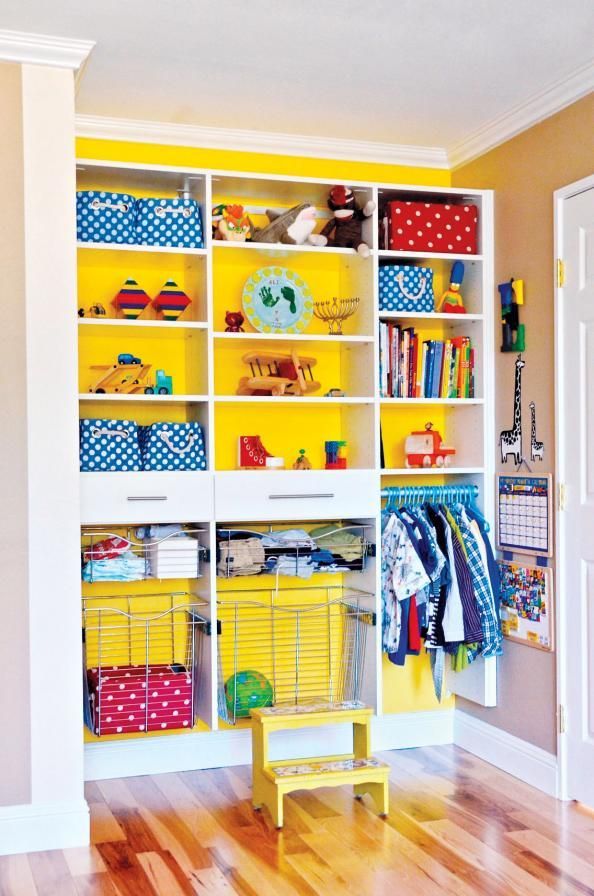 nine0004
nine0004 Recreation area
It is not worth decorating the children's room with accessories and decor items, they will not appreciate it. But to allow you to place toys on the shelves or arrange your favorite trinkets - this will be the best gift for your child.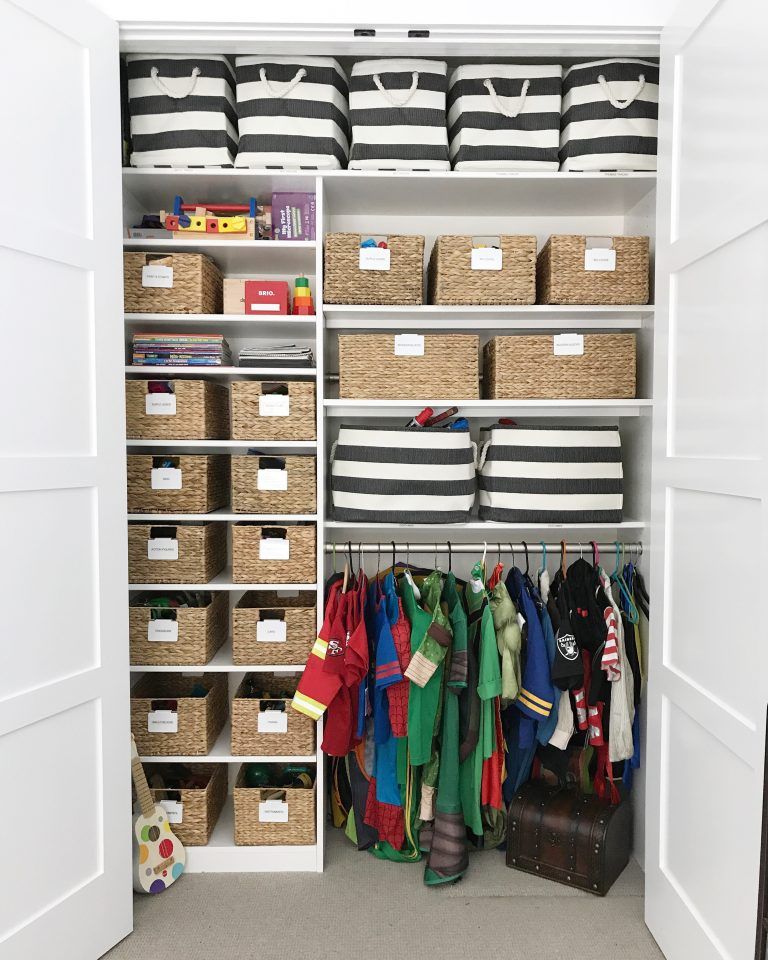 nine0004
nine0004 How to equip an ideal children's room: 3 main rules
Grave No. 1: to get rid of excess
But the child also has grandparents, aunts, uncles... As a result, this can become a problem for everyone. The mess is not cleared out, the parents are irritated, and the children cannot concentrate on any activity, but at the same time they complain of boredom and demand more and more new toys. nine0004
RULE №2: ZONE THE ROOM
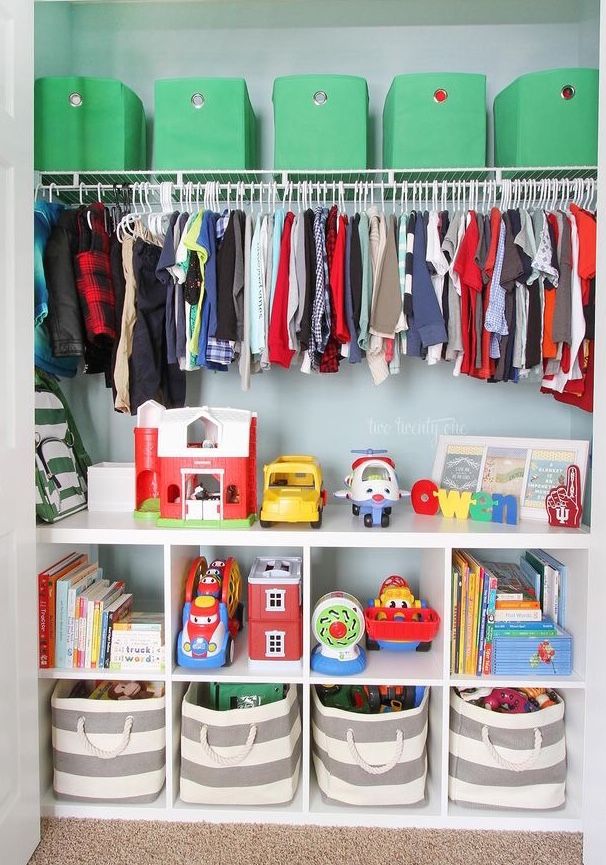 If there is no separate children's room in the house, then select a corner for the child in the living room or bedroom. Let it be small, but it will belong only to him and be arranged according to his taste. Personal space is very important for every person, even a small one. nine0004
If there is no separate children's room in the house, then select a corner for the child in the living room or bedroom. Let it be small, but it will belong only to him and be arranged according to his taste. Personal space is very important for every person, even a small one. nine0004
Rule number 3: organize storage of things
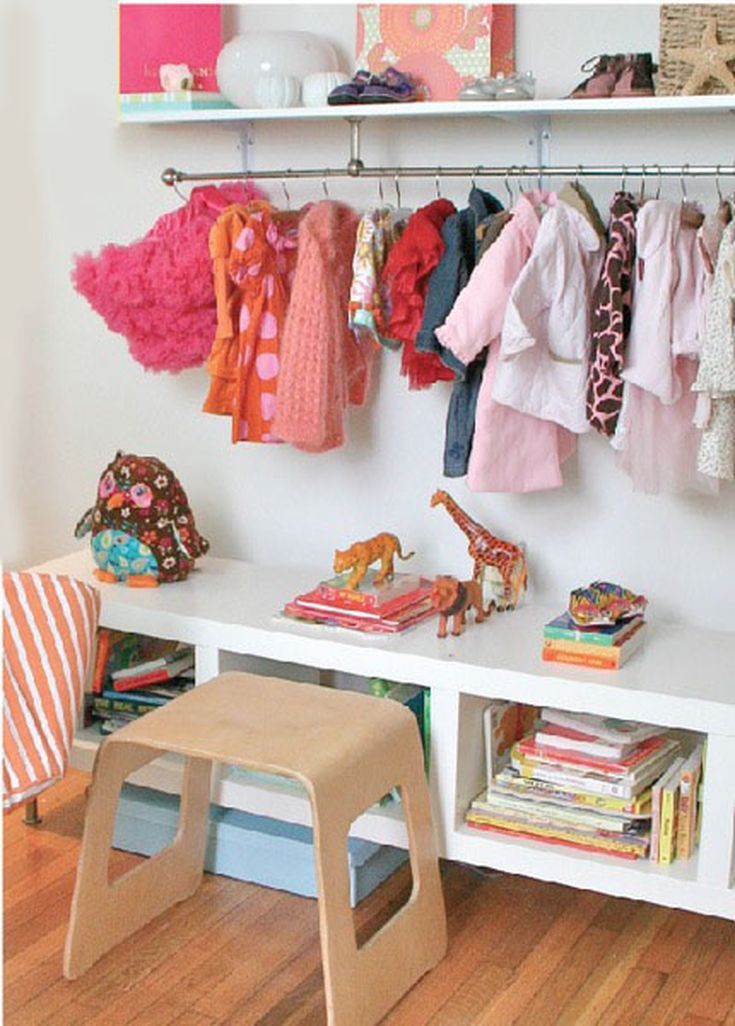 nine0004
nine0004
